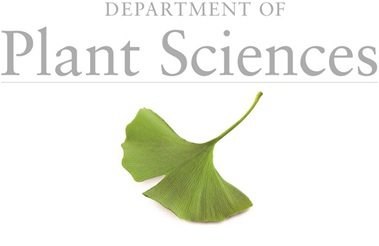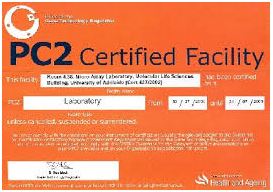Department of Plant Sciences Inspection Template
-
Site conducted
-
Conducted on
-
Prepared by
-
Location
Information, signs and labels
-
Statutory safety signs and notices clearly displayed
-
Chemical hazard signage
-
Training records kept & up to date
-
ALL those working with chemicals have completed the University Chemical Safety Course
Emergency
-
Emergency Contact Numbers displayed and up-to-date?
-
Fire doors maintained, kept clear and not wedged open?
-
Fire extinguishers/blankets in designated place, visible and unobstructed?
-
Safety shower/eyewash clearly visible and unobstructed?
-
Eye wash bottles in date?
-
Spill control materials readily available and personnel familiar with how to use them?
-
Laboratory Phone working?
Storage and Cleanliness
-
Walkways and floor area clear and uncluttered and free of trip hazards?
-
Work areas tidy and free from obstructions, excess storage, clutter?
-
Work areas free of visible contamination?
-
Storage above eye level minimised?
-
Shelves accessible, properly loaded?
-
Handwash facilities available and free from contamination?
Electrical Safety
-
All portable electrical equipment tested?
-
No trailing cables or overloaded multi-plug adapters?
-
All electrical equipment places so as to avoid risk of damage?
Fridges and Freezers
-
All fridges/freezers are spark-free. If not, they are labelled e.g., 'No Flammables'?
-
All chemical containers stored correctly (e.g., not stored upside down or with incompatible materials)?
-
Fridges/freezers not in need of defrosting?
Biological
-
DEFRA licensed materials correctly stored and labelled?
-
Sticky mats still sticky?
-
Biological waste appropriately segregated from non-biological waste?
-
Bins not overflowing?
Chemical
-
Acids stored in acid cabinets?
-
All chemical storage cabinets bunded/spill trays used?
-
Flammable liquids stored in approved fire-resistant cabinets?
-
Flammable liquid stored in a single laboratory is not in excess of 50 litres unless 90-minute fire resistant cabinets to BS14470-1 are used?
-
Minimum quantity of flammable liquid stored on bench (500ml per container maximum)?
-
Winchester bottle carriers and similar available for transporting hazardous chemicals between work areas?
-
Chemical waste not allowed to accumulate?
-
Chemical containers in good condition (not cracking, rusting, labels intact)?
Fume cupboards/MSCs/LF
-
All extraction systems inspected and tested in the last 14 months (COSHH)?
-
Operating correctly?
-
Interior clear of clutter?
-
Large pieces of equipment raised on short legs?
-
Procedures conducted at least 150mm inside sash?
PPE
-
PPE available and in-use as appropriate?
-
Respirators 'Face Fit Tested' in accordance with COSHH?
-
Reusable respirators routinely inspected and checked and stored appropriately?
Compressed Gases
-
Are compressed gases used or stored in area (HSD032C / HSD121C)?
-
Cylinders stored upright and properly secured at all times
-
Correct regulators used for type of gas and pressure used (both cylinder and delivery pressures)
-
Regulators ‘in-date’, checked and display current valid test label
-
Cylinders clearly labelled
-
Empty and ‘not-in-use’ cylinders promptly removed from lab
-
Flammable gases separated from oxidising gases
-
Pipe work in good condition and appropriate for the gas in use
-
All ancillary equipment / safety devices tested and ‘in-date’
Cryogens
-
Are cryogens / cryogen derived gases used or stored in area i.e.liquid nitrogen, liquid helium, liquid carbon dioxide, dry ice etc. (HSD053C)?
-
Appropriate PPE available to handle cryogens?
-
Oxygen depletion monitoring necessary for foreseeable helium and/or nitrogen releases?
-
Carbon dioxide monitoring necessary for foreseeable releases?
-
Monitors are functional, tested and calibrated?
-
Monitors in the correct locations for the gases that could be released?
-
Alarms audible / visible from outside the area at entrances?
-
Appropriate warning signs both in the area and at entrances to it?
Radiation (if applicable)
-
Radiation area available in lab?
-
Evidence of regular inspections carried out by the RPS
-
Evidence of training to use areas separate from this lab?
-
Evidence of use and disposal logs being completed (where appropriate)?
-
All stocks of isotopes accounted for?
Additional
-
Other issues not included in question set












